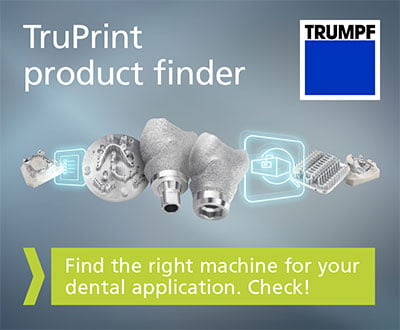What are the Available Dental Lab 3D Scanners on the Market?
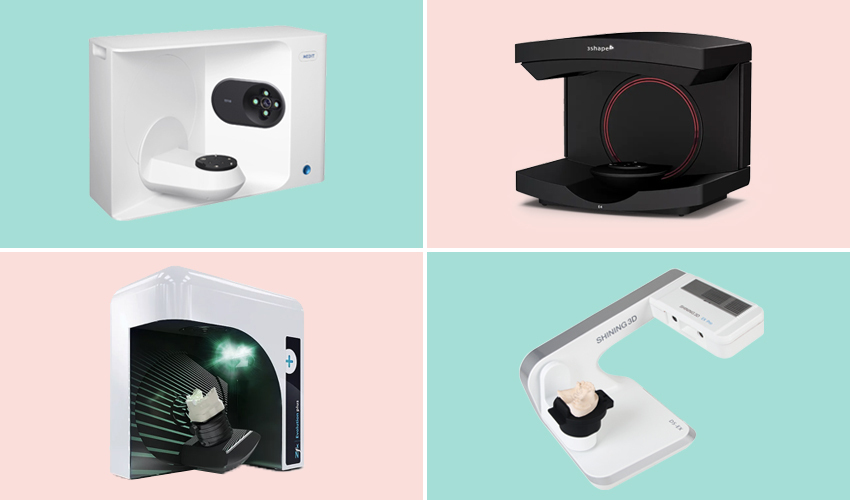
The ability of 3D printing to allow users to create highly accurate, fully customizable appliances is crucial in a sector like dental where perfectly fitted parts are necessary due to the vast differences between individuals. For this reason, 3D scanners made specifically for the dental industry are becoming increasingly popular. Generally, these scanners come in two types, intraoral scanners which allow dentists to scan directly into a patient’s mouth and lab scanners which are designed to scan impressions of a patient’s mouth. There are advantages to both as they are used in different ways, however for 3D printing, lab 3D scanners are often the ones used. We present in alphabetical order the top lab 3D scanners used in the dental industry to help users to understand the available products currently on the market.
7Series from Dental Wings
The 7Series model and impression scanner from Dental Wings is offered in two versions, Synergy and Productivity. Both models are capable of scanning models and impressions and are suitable for medium to large dental laboratories, according to the manufacturer. The 7Series Synergy offers the advantage that users are also able to scan complete dentures, and bite splints, and orthodontic models can be archived. Both versions feature an automatic scan and design wizard. Accuracy is 15 µm, and it takes about 44 seconds to scan a model. An STL file is created for export. The unit has 5 axes and has a scan volume of 140 x 140 x 140 mm (5.51″ x 5.51″ x 5.51″).
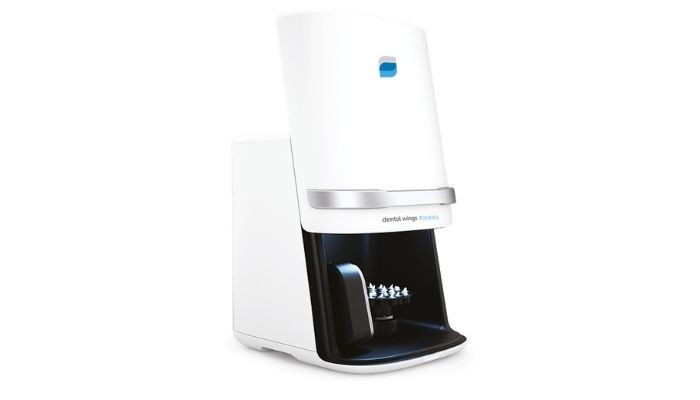
AutoScan-DS-EX from SHINING 3D
Chinese manufacturer, SHINING 3D, is known for its independent research and development of 3D digitzing technologies. Their scanners are suitable for many different industries but the company also has several adapted for the dental industry. Their digital dental solutions include lab scanners, starting with their entry level model the AutoScan-DS-EX. This scanner uses structure light 3D scanning, can scan a bite in about 13 seconds. What is especially interesting is that it also boats a clinic mode, which would enable users to be put directly into dental clinics for chair-side restauration solutions. Its dimensions are relatively large at 10.2″ x 10.6″ X 16.5″ (260mm x 270mm x 420mm). For those who are looking for more advanced models, SHINING 3D also has the AutoScan-DS-EX Pro which uses Blue Light and is notable for its fast scan speed, taking only 8 seconds for a bite scan and the AutoScan-DS-MIX which is perfect for high-end implant and veneer applications thanks to its ≤ 7 µm accuracy and larger dimensions. The scan exports as an STL file and is compatible with most CAD/CAM software and hardware on the market.
Ceramill Map 600+ from AmannGirrbach
The Ceramill map 600+ from the manufacturer Amann Girrbach is a high-performance scanner with three axes and an open installation space, which enables easy handling with an integrated universal carrier plate. The scanner uses blue light technology and a 3D sensor to produce an HD scan with an accuracy of 4μm. Thanks to intelligent DNA speed scanning, a full jaw scan is created in 18 seconds as an STL or PLY file. The Ceramill map 600 weighs about 55lbs (25 kg) and has a size of 16.3″ x 16.9″ x 18.5″ (415 x 424 x 469 mm).
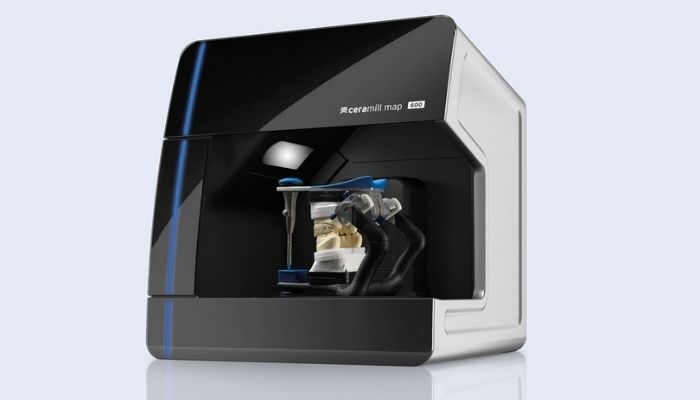
CS.Neo Pro from CADstar
CADstar is an Austrian manufacturer that has developed a range of 3D scanners for laboratories. The CS.Neo Pro is one of them/ Designed for professionals, it can do a complete scan of a dental prosthesis in only 12 seconds. Available in three colors (white, gray or black), the dental scanner offers a precision of 5 microns and the possibility to scan colors. Based on the structured light process, it offers three export formats: STL, OBJ and PLY. 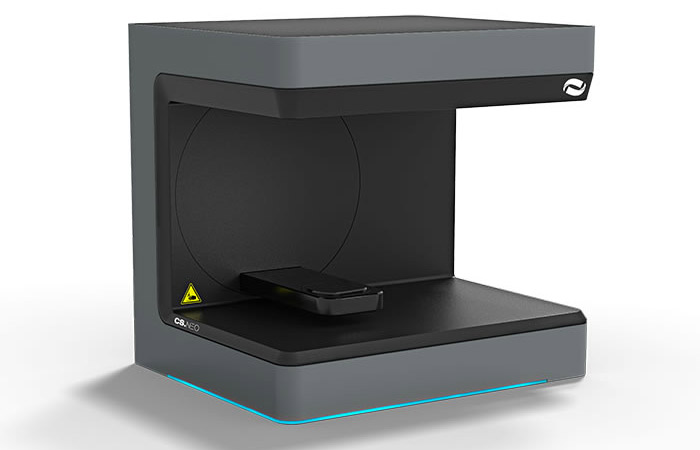
DScan 5 from EGSolution
The DScan 5 is the latest dental scanner developed by the Italian manufacturer EGSolutions, launched in 2020. Based on the structured light process, it is equipped with a camera offering a resolution of 13 megapixels. Its acquisition volume is 3.5″ x 3.15″ x 2.16″ (90 x 80 x 55 mm), allowing for easy scanning of impressions, implants, crowns, etc. The DScan 5 offers a precision of 0.005 mm and 4 export formats: STL, PLY, OBJ and ASC. It thus meets the needs of dental clinics and laboratories.
E4 from 3Shape
3Shape was created with the stated goal of making 3D scanning better. Though they first worked in the hearing industry, the company has since moved into dentistry and works to improve dental care through digital solutions. They have many different scanners including intraoral, but out of their lab scanners, the most well-known is the E4. According to 3Shape, the E4 is double the speed and accuracy of its predecessor the E3, with double the cameras. The full arch scan speed is about 9 seconds and the accuracy is 4 microns, making it suitable for implant cases. The scanner has four 5 MP cameras and is suitable for both restorative and ortho applications.

Evolution Plus from Zfx
Developed by prosthodontists for prosthodontists, the Zfx Evolution Plus 3D scanner has a scanning volume of 5.5″ x 3.15″ (140 x 80mm) and an accuracy of less than 9 μm. The Zfx scanner is based on the structured light process, and allows for the simultaneous recording of 12 dies thanks to its Multi-Die tray. Finally, thanks to the “Ready for 3D printing” function, the scanner generates an stl file, compatible with any 3D printer.
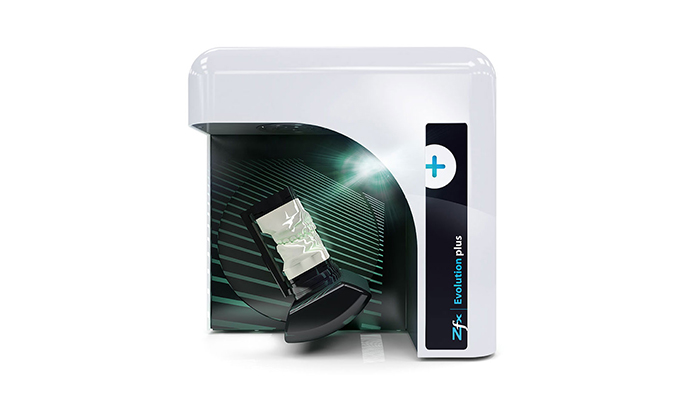
inEos X5 from Dentsply Sirona
The next scanner is the inEos X5. This was launched by Dentsply Sirona, a merger of DENTSPLY International Inc. and Sirona Dental Systems, in 2013. The unique 5-axis scanning technology, the robotic arm and its large range of motion make the inEos X5 an all-round scanner with precise digital acquisition. Both models and impressions can be digitally scanned, so the scanner, which weighs about 88lbs (40kg) and has a volume of 18.7″ x 28.9″ x 18.1″ (474 x 735 x 460 mm), can be used for many different indications. The scan data acquired with the inEos X5 can be flexibly integrated into the further workflow – either via STL export or via wireless data transfer to the inLab CAD software.
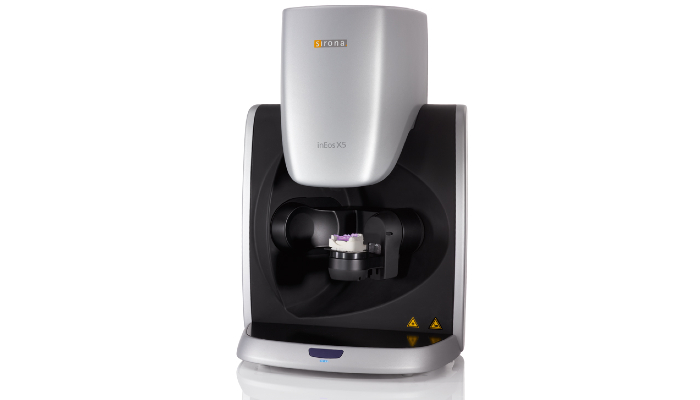
S600 ARTI from Zirkonzahn
With an accuracy of less than 10 μm, the Zirkonzahn S600 ARTI 3D scanner is based on structured light technology. Also aimed at the dental sector, the Zirkonzahn 3D scanner offers users the ability to scan in color, a feature that can prove advantageous for the creation of dental stellar. In addition, the machine can export files in STL format, but also in OFF, OBJ and PLY formats.
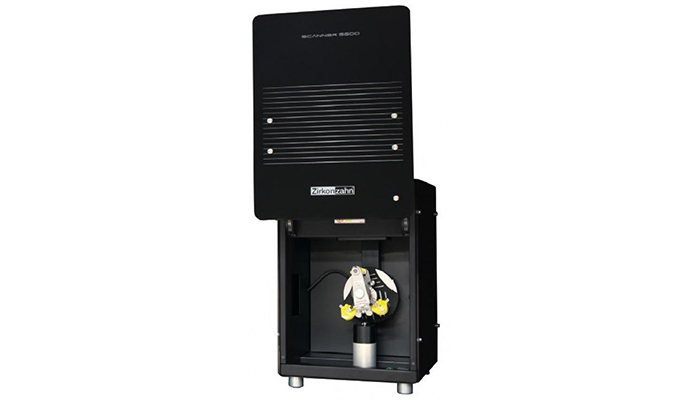
T-Series from Medit
The manufacturer Medit is one of the pioneers in the development of oral 3D scanners in the dental industry. In particular, it is known for the Medit T series, which includes the T310, T510 and T710 models. According to the manufacturer, this is one of the most efficient dental solutions to date. With the included hardware and optimized 3D scanner software, professionals will be able to scan complex parts in a matter of seconds. It features 4-micron accuracy (ISO 12836) and the ability to export files in STL format, so they can be easily modeled in any design software, as well as prepared for 3D printing. The state-of-the-art technology of the T Series guarantees high-quality, high-precision models in accordance with the strictest international standards, making them ideal for use in the dental sector.
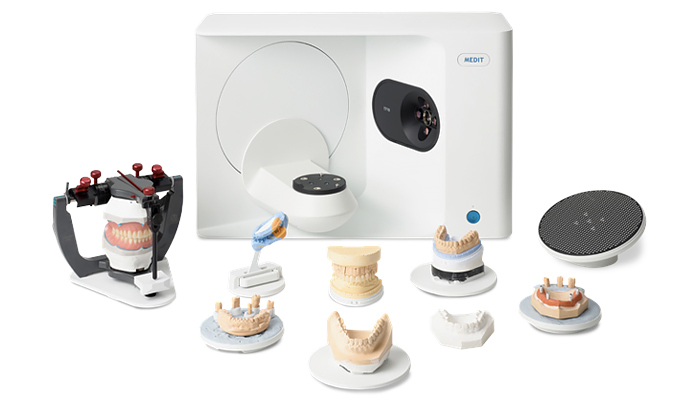
Would you be interested in a dental 3D scanner? Let us know in a comment below or on our Facebook, Twitter and LinkedIn pages! Sign up for our free weekly Newsletter here, the latest 3D printing news straight to your inbox!





